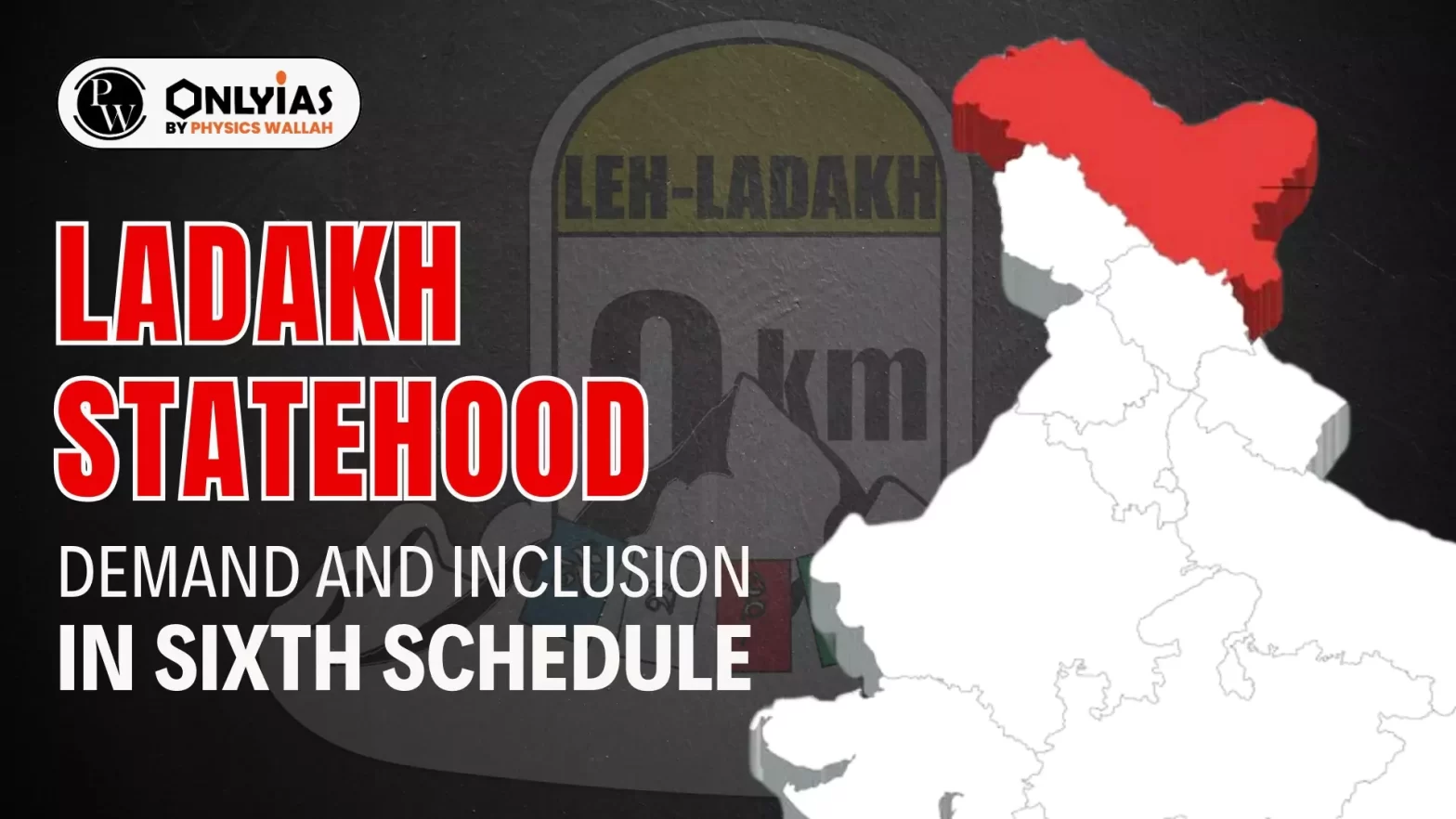![]() 16 Feb 2024
16 Feb 2024

This article is based on the news “Why Ladakh has turned to mass protests in freezing temperatures | Explained” which was published in the Hindu. Thousands of people in Leh have returned to the streets to their demand for full statehood for Ladakh Union Territory.
| Relevancy for Prelims: Union And Territory, The Jammu and Kashmir Reservation Amendment Bill 2023, SCHEDULED & TRIBAL AREAS and Autonomous District Councils.
Relevancy for Mains: Ladakh Statehood Demand and Inclusion in Sixth Schedule: Reasons, Demands, and Initiatives. |
|---|
Jammu and Kashmir Reorganisation Act 2019Jammu and Kashmir Reorganisation Bill, 2019 was passed on August 5, 2019, divided Jammu and Kashmir into two parts:
|
|---|
Sixth Schedule of the Indian Constitution
|
|---|
| Must Read | |
| NCERT Notes For UPSC | UPSC Daily Current Affairs |
| UPSC Blogs | UPSC Daily Editorials |
| Daily Current Affairs Quiz | Daily Main Answer Writing |
| UPSC Mains Previous Year Papers | UPSC Test Series 2024 |
<div class="new-fform">
</div>